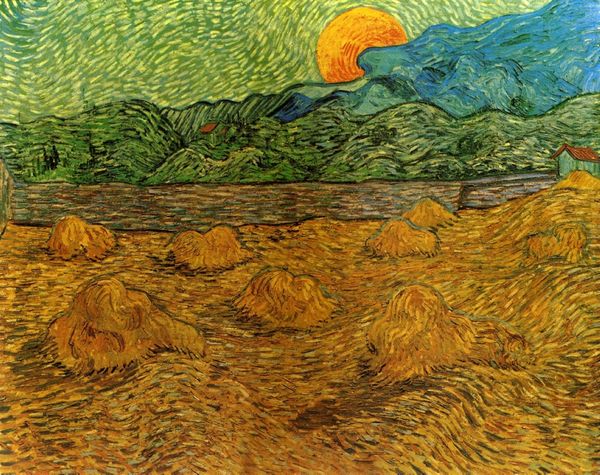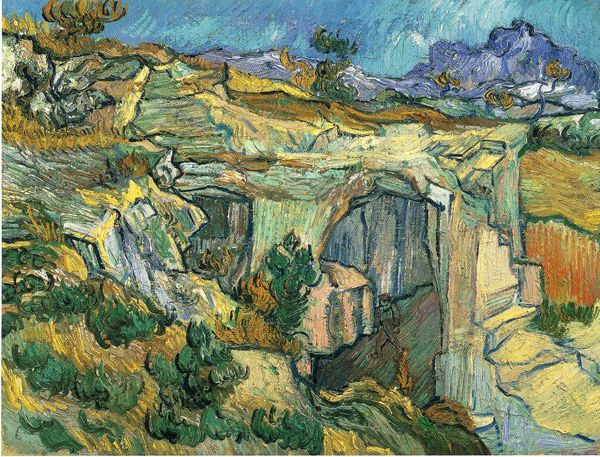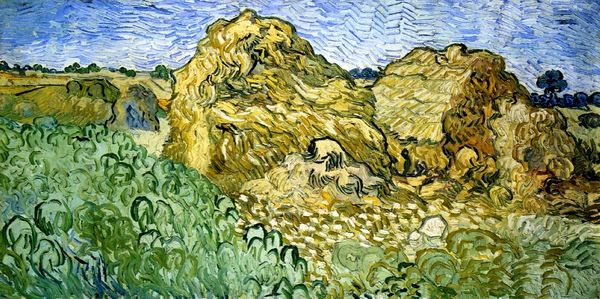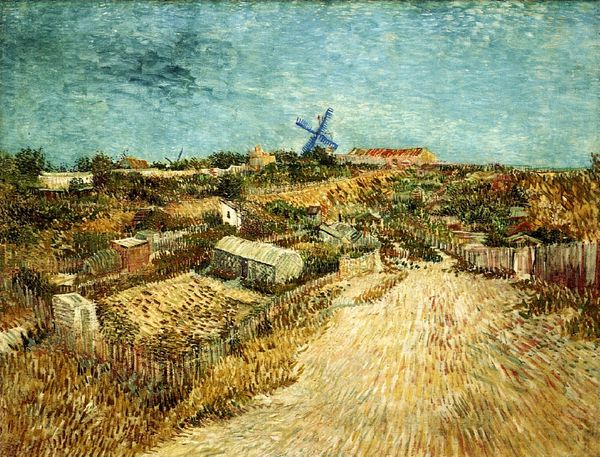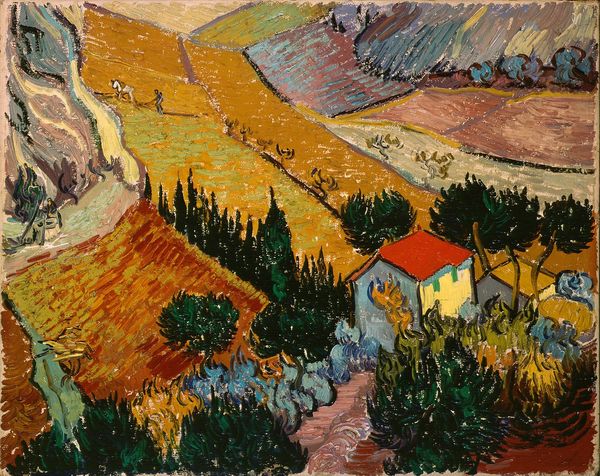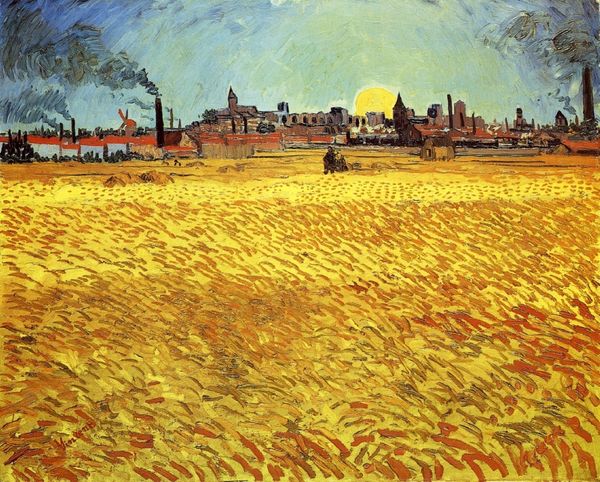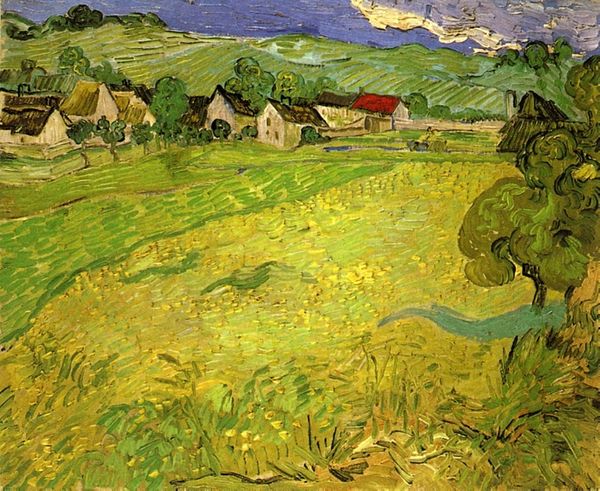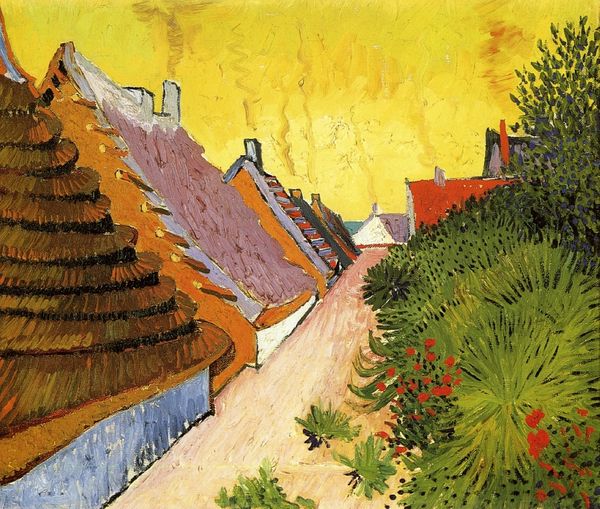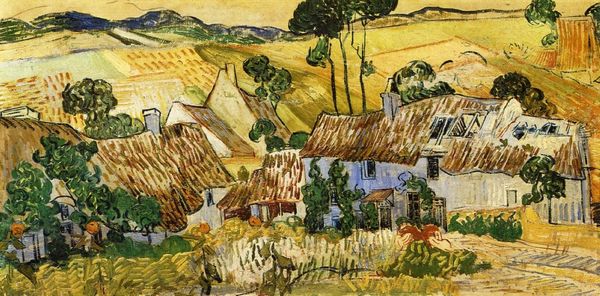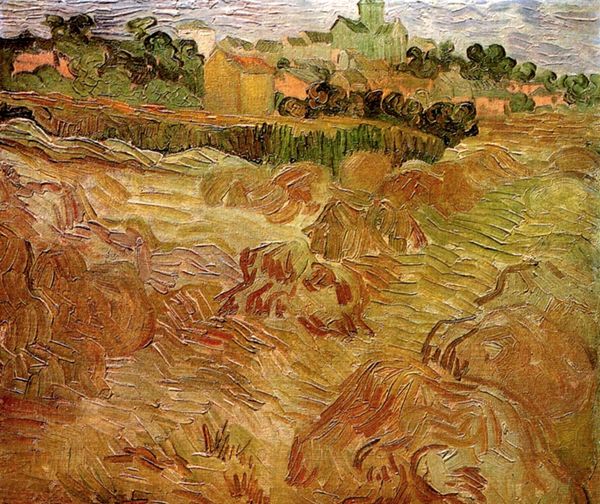
plein-air, oil-paint
#
impressionism
#
plein-air
#
oil-paint
#
landscape
#
post-impressionism
#
expressionist
Dimensions: 73 x 92.5 cm
Copyright: Public domain
Curator: Oh my, isn’t that something? So bright, so… alive. Looking at "Haystacks in Provence" from 1888, I can almost smell the dry grass baking under the Provençal sun. Editor: The intensity of the color immediately strikes me. The impasto, the application of paint, is so thick you can practically feel the labour of it. Look how Van Gogh builds up the haystacks themselves, stroke by stroke. It is a very crafted portrayal of labor and storage, an important commentary. Curator: Absolutely! It’s like he's not just painting haystacks; he’s painting the very essence of harvest, the slow accumulation of nature's bounty. And yet, there’s a tension, isn't there? Those swirling brushstrokes, that restless energy, speak of something more than just simple rural contentment. The blue tones really help to enhance that golden, earthy hue. Editor: That tension, I believe, stems directly from his engagement with the landscape and the materiality of painting itself. The haystacks aren't merely idyllic subjects. Consider them as built structures composed through hard physical work. Also the relationship between the labor of the harvesters and Van Gogh’s labor as an artist interpreting it for viewers through this medium and method, and how that dictates meaning to both. Curator: That's a marvelous point! You see, for me, these haystacks become metaphors, echoing human experience. The smaller, lonely haystack, further away feels more existential, juxtaposed against the dominant role that materiality plays with the largest stack closer up. Almost like a philosophical study in texture. Editor: Yes, and also the societal value, and means to get by! This focus elevates craft beyond mere decorative status. I can appreciate a different form, how both our experiences differ on an emotional vs pragmatic level. It prompts us to reevaluate the relationship between artist and maker, viewer and subject, the human, and materials. Curator: So true. This conversation has been interesting for me as an artist looking at another’s labor, in both subject, medium and method. And I must say, after examining this closely, I must add van Gogh did something amazing here! Editor: It seems looking through that particular lens highlights a universal theme: the transformative power inherent in understanding the artist's and worker’s materials. I, too, appreciate this piece far more now, looking closely at Van Gogh’s relationship between rural industry, materials and art.
Comments
No comments
Be the first to comment and join the conversation on the ultimate creative platform.

